Robberflies are impressive hunters of the insect world, and will catch grasshoppers, beetles, wasps and even other flies. They have sharp piercing mouthparts with which to kill their prey.
1
Striped slender robberfly Leptogaster cylindrica
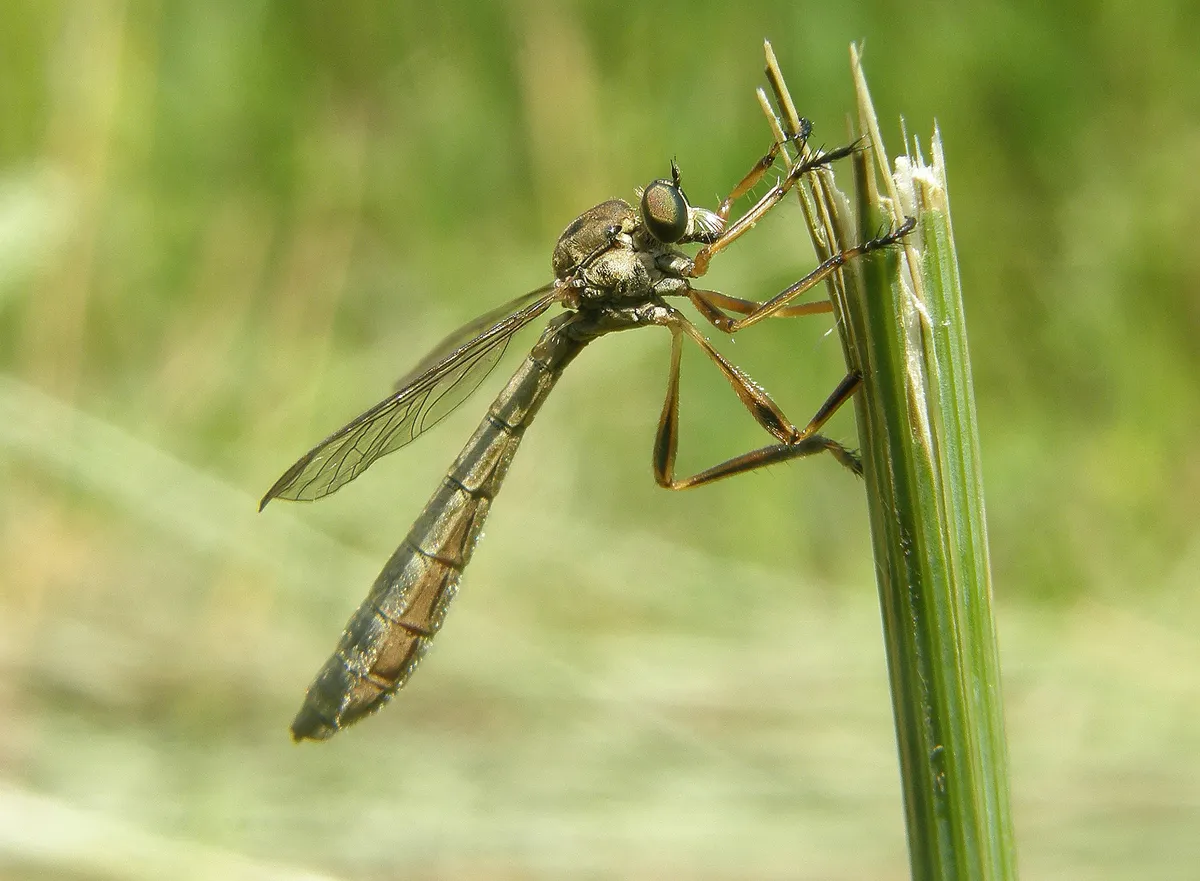
A fairly common species of taller grasslands in the southern half of Britain. Leptogaster species are very slender, delicate and weak-flying robberflies, and the prey is accordingly small - aphids, small flies and even small spiders.
When to see: May to August
2
Kite-tailed robberfly Machimus atricapillus
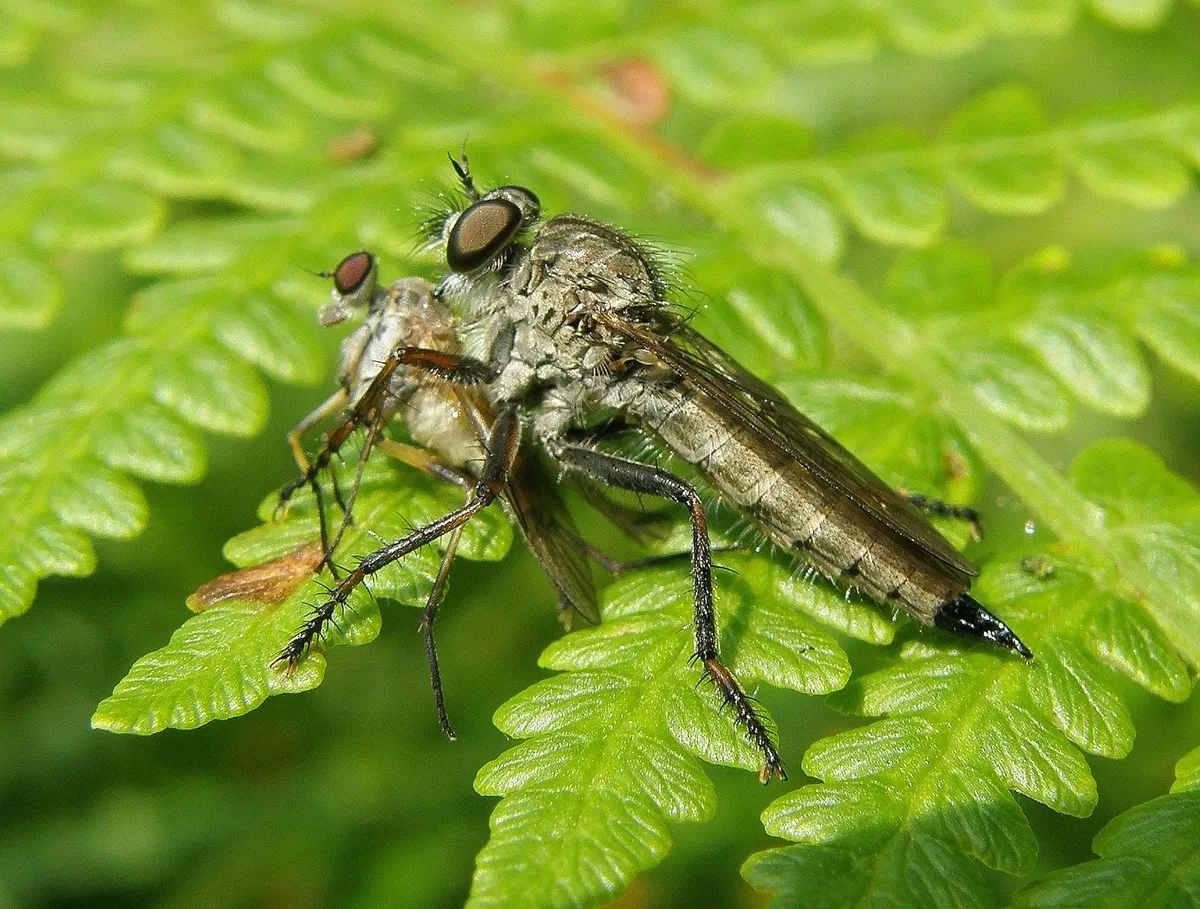
A widespread and locally common robberfly of southern Britain where it can be found in a variety of habitats, especially scrubby grassland and woodland edge.
When to see: Summer
3
Hornet robberfly Asilus crabroniformis
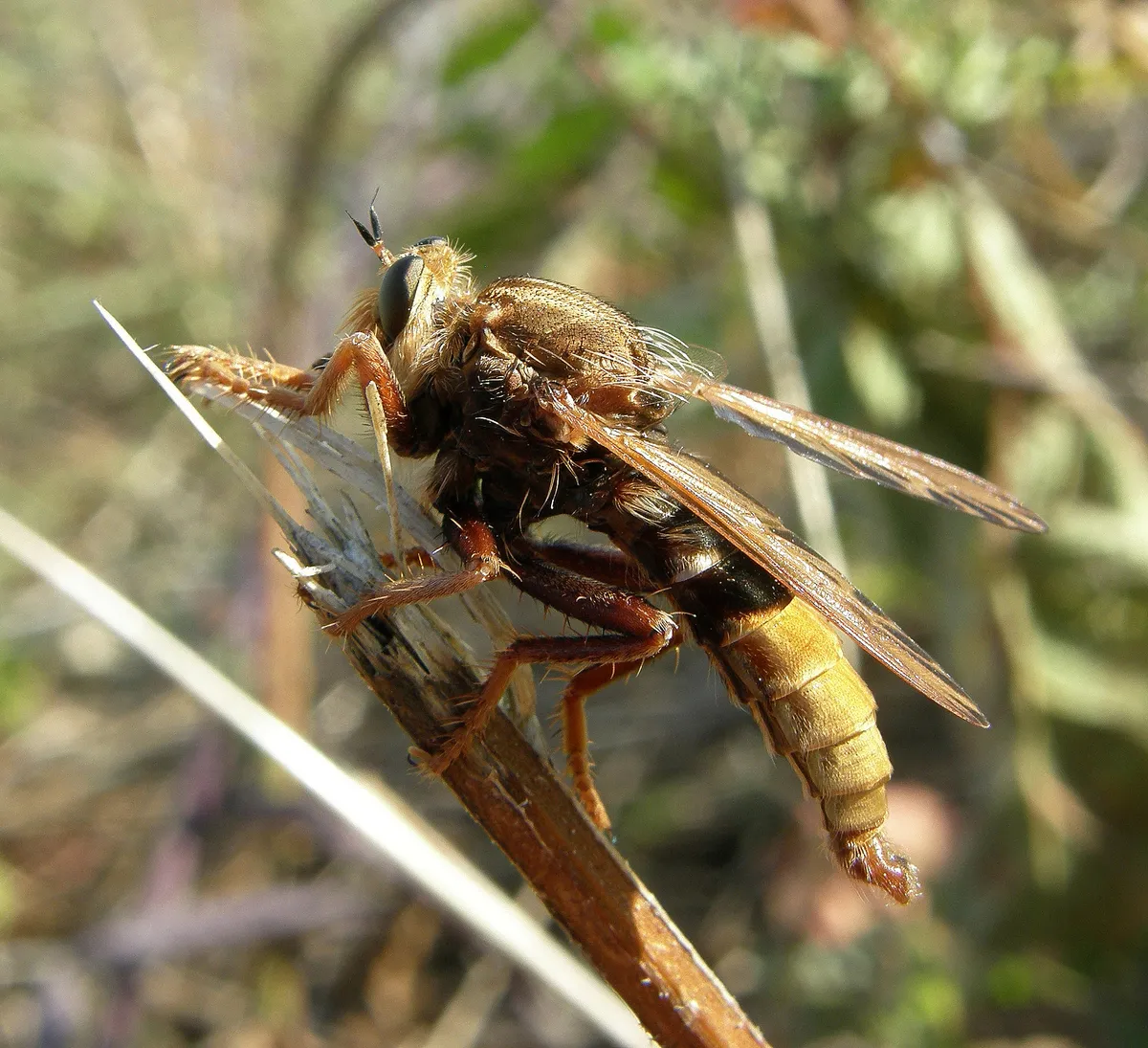
Britain's largest and most colourful robberfly with a hornet-like colour scheme. This is a scarce species of dry pastures in southern England including both chalk downland and heathland. Adults are most easily found by searching old dry cow pats in late summer.
When to see: July to October
4
Dune robberfly Philonicus albiceps

A fairly large grey robberfly. It is a characteristic species of coastal dunes but occasionally occurs inland on very sandy heathland. Adults can usually be found resting on sand along paths or amongst marram grass.
When to see: Summer
5
Spring heath robberfly Lasiopogon cinctus
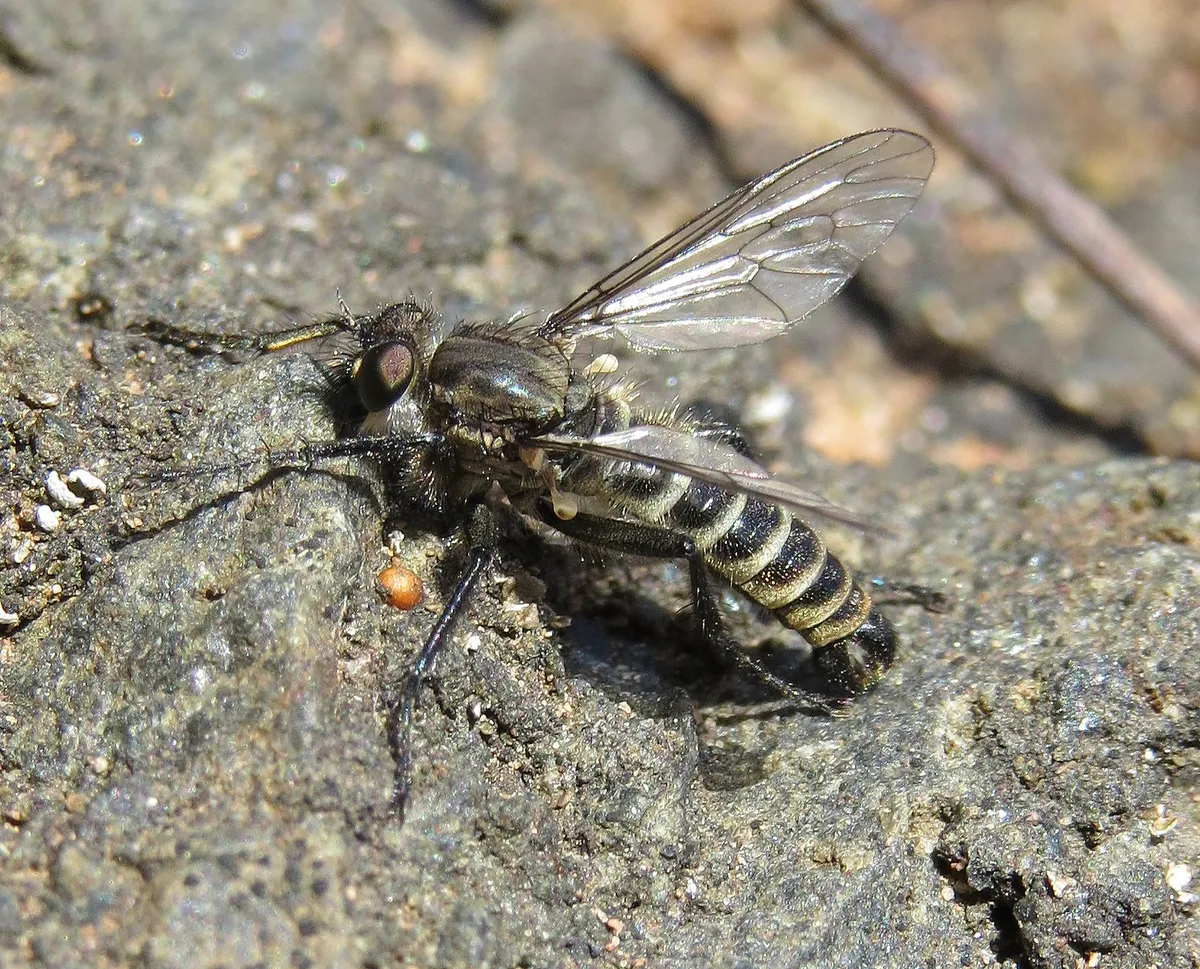
A rather distinctive, small robberfly with a cylindrical abdomen bearing rings of pale dusting. It is a scarce species of southern heathlands, coastal dunes and other very sandy places. It emerges in spring well before other robberflies, though it can persist until late summer.
When to see: Mid-April to June
6
Violet black-legged robberfly Dioctria atricapilla
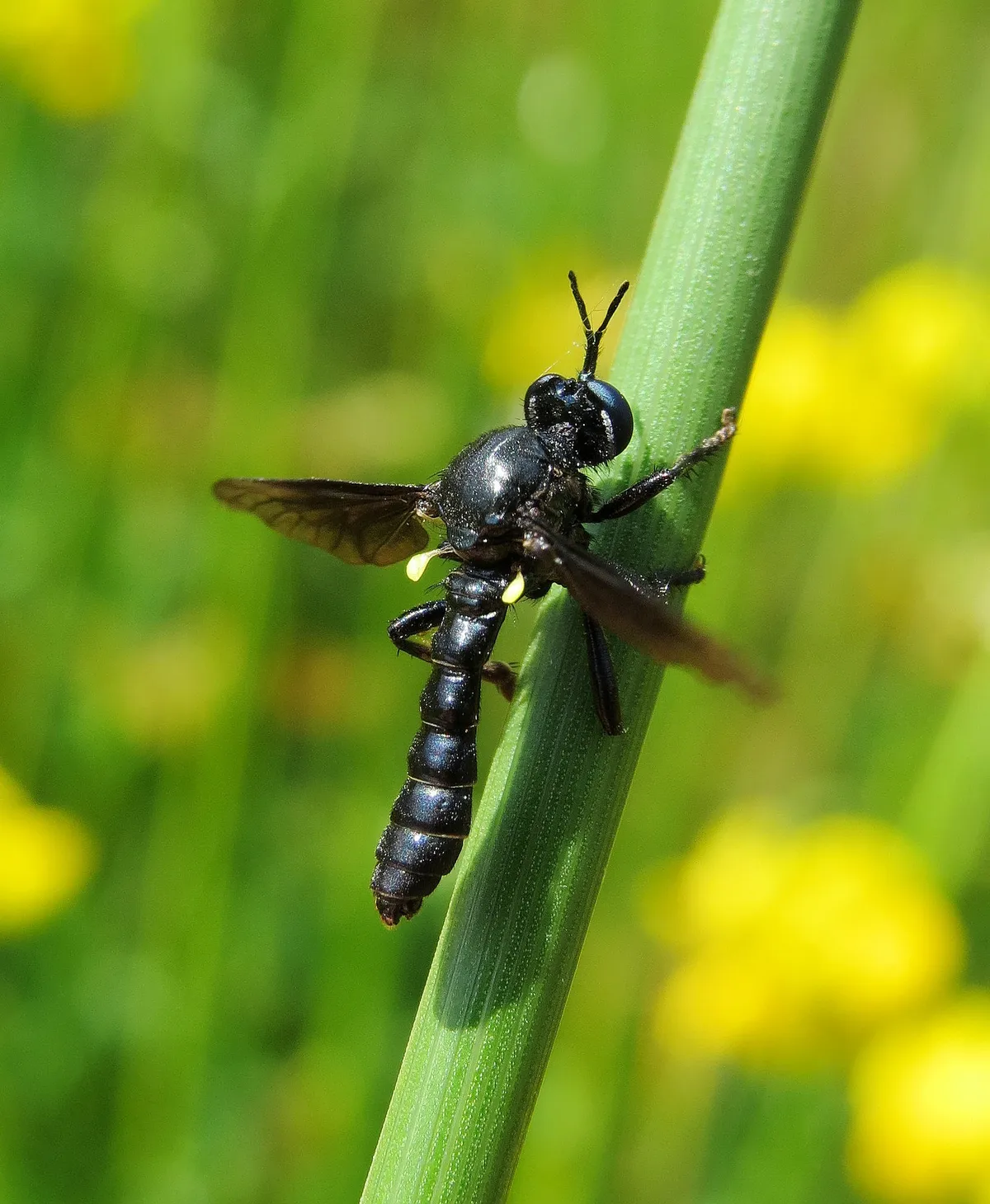
A robberfly of open grassland, heathland and coastal dunes, widespread and frequent in the southern half of England. It is the only Dioctria with entirely black legs.
See more of Steven Falk's photos on his Flickr page.
Look out for World Robberfly Day, which is celebrated by entomologists around the world on 30 April.